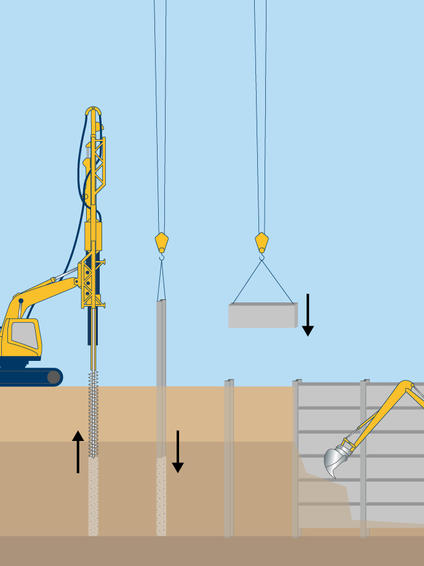Soldier piled walls are a form of embedded retaining wall that are used to retain the soil behind to allow the ground level in front of the wall to be lowered, the retained height can be increased with the use of propping or anchoring.

Common uses
Process
Soldier pile walls are cast in-situ bored or CFA piles installed at wide spacings. Spans of up to –2.4m are common in the most favourable soil conditions. The soil arches between the piles in the short term before a more permanent wall is installed (typically by shotcreting or a formed concrete wall) during excavation. This wall type is not suitable where high water pressures or flows exist. This is usually the simplest, fastest and cheapest type of embedded retaining wall in relatively stable soils.
Contiguous piled walls are closely spaced soldier piles with the gap between the piles reduced to 50-150mm in order to retain the soil behind the piles prior to excavation of soil in front of the wall. These are used in less favourable soil conditions or where greater structural capacities are required to limit deflections. Contiguous walls offer greater structural capacity for the same diameter than either soldier or secant piled walls.
King post walls are similar to soldier piles, however the main pile is either bored and then reinforced with a H beam, or is a driven H section, and the webs are infilled with spanning structural planks.
A sequence of works is carefully considered to install the retaining wall and the control of the excavation works post installation. Where propping is required to the wall the mechanism of the propping and any prestress required needs to be clearly identified and implemented.
Advantages
Quality assurance
Keller use the latest technology, testing regimes and best practices protocols developed over many years to ensure the position, verticality and structural integrity of our pile walls, in addition Keller strive to undertake periodic monitoring of the wall performance is undertaken, by both embedded inclinometers in the wall, and surface surveying at specific stages of construction.